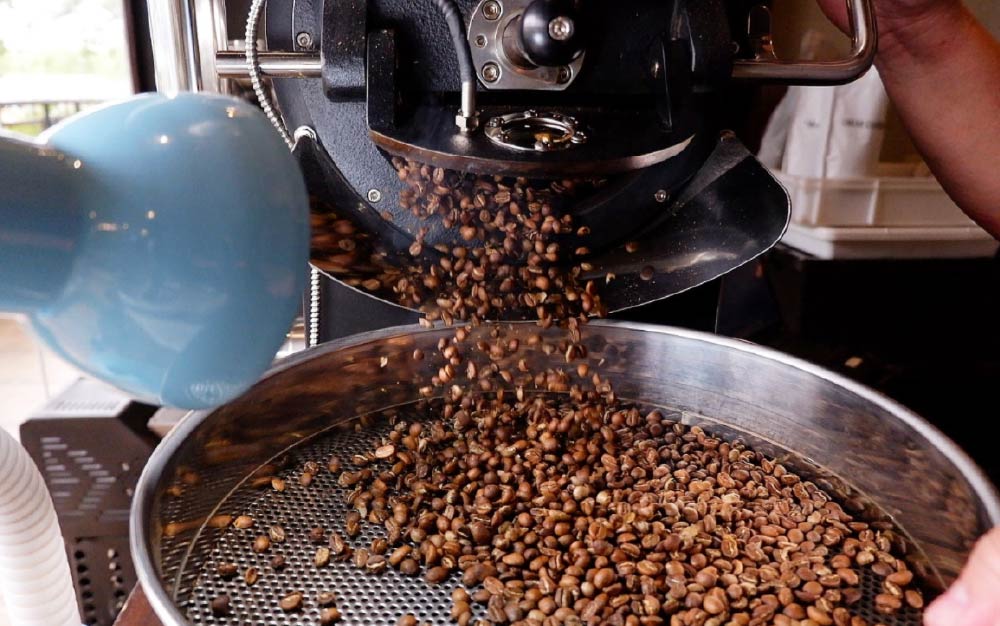Coffee lovers know that finding the perfect roast is essential to enjoying the best cup of coffee. With countless varieties of beans and roasting methods available, picking the right roast for your taste preferences can be overwhelming. However, understanding the basics of coffee roasts and how they influence flavor can help you make more informed choices. In this article, we’ll explore the different types of roasts, how they affect the flavor profile of coffee beans, and offer tips for selecting the perfect roast that matches your palate.
Understanding Coffee Roasts
Before choosing the right roast, it’s important to know the different roast levels. Coffee roasts are typically categorized into four main types: light, medium, medium-dark, and dark. Each roast level brings out distinct flavors and characteristics in the coffee beans, creating a unique drinking experience.
1. Light Roast
Light roast coffee is known for its bright acidity and fruity or floral notes. The beans are roasted for a shorter period, preserving their original flavor and often have a light brown color. Light roast is perfect for those who prefer a more nuanced and complex taste, as the roasting process allows the bean’s natural qualities to shine through.
The acidity level in light roasts is typically higher, and the flavor is often described as “bright” or “clean.” This roast is ideal for coffee drinkers who enjoy subtle, delicate flavors without the bitterness of darker roasts.
2. Medium Roast
Medium-roasted coffee is well-balanced, with a slightly sweeter taste and a moderate level of acidity. It’s one of the most popular roast levels because it strikes a balance between the bean’s original flavors and the roasting process. Medium roasts tend to have a fuller body than light roasts and exhibit a range of flavors, from fruity to nutty or even chocolatey.
A medium roast is a great option for those who enjoy a middle ground between light and dark. It offers more complexity than a dark roast but isn’t as acidic as a light roast. Many people find this roast to be their go-to for everyday coffee drinking.
3. Medium-Dark Roast
Medium-dark roast coffee has a richer, bolder flavor compared to medium roasts. This roast level introduces more roasted, caramelized notes and reduces the acidity. The beans appear darker brown and often have an oily surface. Medium-dark roasts have a deeper body and are often described as having a slightly bittersweet aftertaste.
A medium-dark roast could be the ideal choice if you enjoy a bit of complexity with a strong body and slightly reduced acidity. It’s a great option for those who like their coffee to have more of a roasted character but without the intense bitterness of dark roast.
4. Dark Roast
Dark roast coffee is full-bodied, rich, and bold. The beans are roasted longer, bringing out deep, smoky, and sometimes chocolatey or spicy flavors. Dark roasts often have a much lower acidity, making them smooth but more bitter than lighter roasts. The beans take on a dark brown or even black color, often appearing shiny due to the oils that rise to the surface during roasting.
If you’re a fan of intense, bold flavors and don’t mind a bit of bitterness, dark roast coffee might be for you. It’s the perfect match for those who enjoy strong, full-bodied coffee with a pronounced roasted taste.
How to Choose the Right Coffee Roast for Your Palate
Choosing the right roast depends on your taste preferences and how you enjoy your coffee. Below are some factors to consider when selecting the best roast for your palate.
1. Acidity Level
Acidity plays a big role in coffee’s taste, often the first thing people notice in a cup. If you like a coffee with a bright, tangy kick, light roasts are your best bet. However, if you prefer a smoother cup with low acidity, a medium-dark or dark roast will suit your taste better. Medium roasts offer a nice balance if you want something in between.
2. Body
The body of coffee refers to how it feels in your mouth—whether it’s light and refreshing or full and heavy. Light roasts tend to have a lighter body, while medium and dark roasts offer a fuller, richer feel. If you enjoy a more substantial coffee, go for medium-dark or dark roasts. Stick to light or medium roasts for a lighter, more refreshing brew.
3. Flavor Complexity
Consider how complex you want your coffee to taste. Light roast coffee beans are ideal if you enjoy nuanced flavors with fruity, floral, or herbal notes. On the other hand, if you prefer a simple, bold taste with smoky, chocolatey, or earthy undertones, dark roasts will deliver that intensity. Medium and medium-dark roasts provide a good balance with both original bean flavors and roasted notes.
4. Bitterness
If you’re sensitive to bitterness, you may want to avoid dark roasts, which tend to have a stronger bitter taste due to the longer roasting process. Medium roasts offer a bit of bitterness but are generally more balanced, while light roasts have the least bitterness. Experimenting with different roast levels can help you find the perfect balance of bitterness that suits your palate.
Final Thoughts
Choosing the perfect coffee roast involves understanding your taste preferences and how different roast levels affect the flavor of coffee beans. Whether you enjoy the bright acidity of a light roast or the bold, full-bodied flavor of a dark roast, there’s a roast level for everyone. You can find the roast that perfectly matches your palate by considering factors like acidity, body, complexity, and brewing method. Ultimately, experimenting with different options is the best way to discover your ideal coffee roast.

